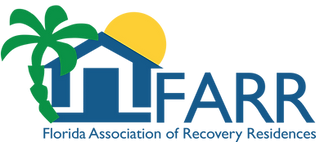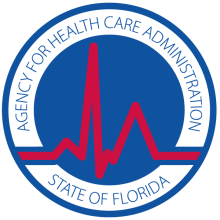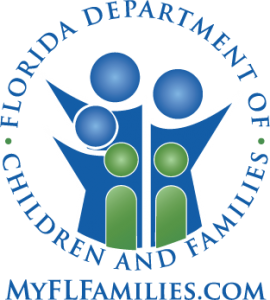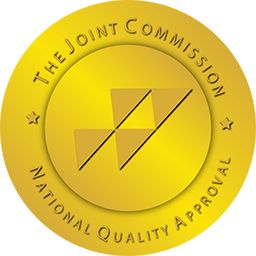This is what life is often like for those suffering from one of the biologically based mental illnesses known as anxiety disorders. Anxiety disorders are the most common mental illnesses in the United States. These serious brain disorders are estimated to affect more than 20 million Americans (approximately one in nine) every year and often co-occur with substance abuse in dual diagnosis.
Several factors seem to contribute to the development of an anxiety disorder. Much new research suggests that these disorders are both genetic and the result of one’s brain chemistry. Certain life experiences and one’s general personality are also thought to influence the likelihood of an anxiety disorder.
It is quite common for one anxiety disorder to co-exist with another or several other disorders. Those with anxiety disorders frequently suffer from depression, substance abuse related disorders, and/or eating disorders. In fact, it is estimated that over half of those diagnosed with panic disorder or OCD are depressed, too. Many dual diagnosis patients at Transitions Recovery receive treatment for substance abuse and anxiety.
Our treatment center in Florida helps patients with anxiety disorder manage and cope with their anxiety to improve their quality of living.

Types of Anxiety Disorders
Phobias are defined as exaggerated, involuntary, and irrational fears of particular situations or things. They are generally divided into three types:Specific (or simple) phobia – This type of phobia is brought about by a specific object or situation such as flying, heights, needles, or snakes. Specific phobias are more common in women than in men and usually first appear during childhood.Social phobia (social anxiety disorder) – Limited specifically to social situations, this particular phobia is typified by extreme fear of meeting new people and of being embarrassed, humiliated, or judged by others. Social phobia appears to be diagnosed equally among the sexes. Usually first appearing in the mid-teens, social phobia sometimes arises from a history of childhood shyness.In addition to substance abuse, a dual diagnosis of specific or social phobia displays 3 symptoms:
- Exposure to the feared object or situation induces anxiety, often in the form of panic attacks.
- The individual recognizes the irrational nature of their fear.
- The anxiety caused by the phobia becomes disruptive to the individual’s lifestyle.
Agoraphobia – Those with agoraphobia have an intense fear of being trapped in particular places or situations, or they are afraid of not being able to find help if they experience anxiety or a panic attack. Fears of those with this type of phobia often center around being alone in an open area or being in a large crowd. Those with agoraphobia often avoid such situations altogether.It’s important to remember that everyone has fears and experiences times of shyness and anxiety, but diagnosed phobias cause severe impairment.
OCD is an anxiety disorder characterized by persistently intrusive and inappropriate thoughts, impulses, or images that run through one’s mind (obsessions) and repetitive behaviors that one feels compelled to do.Common obsessions include fear of contamination, fixation on lucky or unlucky numbers, fear of danger to oneself or others, need for order or exactness, and excessive doubt. The most common compulsions performed in response to these obsessions include ritualistic hand washing, counting, checking, hoarding, and arranging.Although most people experience such thoughts and behaviors sometimes, OCD is considered to occur when these obsessions and compulsions are experienced for more than an hour each day in a way that interferes with one’s life or causes great anxiety.Equally common in males and females, OCD often appears earlier in males. Generally, the disorder first begins in adolescence or early adulthood, although it may start in childhood.
Personally experiencing or witnessing a violent or tragic event that caused feelings of intense fear, helplessness, or horror can sometimes cause PTSD. Events that may lead to the development of this anxiety disorder include rape, war, natural disasters, abuse, and serious accidents. These events may also lead to substance abuse as a means of coping.While it is common to experience a brief state of anxiety or depression after such occurrences, those with PTSD continually exhibit the following:
-
- Nightmares, hallucinations, or flashbacks of re-experiencing the traumatic event.
- Avoidance all things associated with the event, often showing a sense of detachment.
- Increased arousal displayed by difficulty sleeping, irritability, difficulty concentrating, extreme alertness, or jumpiness.
Those diagnosed with PTSD experience symptoms for longer than one month and are unable to function as they did before the event. PTSD usually appears within 3 months of the traumatic experience, but in some circumstances can surface months or even years later. PTSD can occur at any age.Acute stress disorder is an anxiety disorder similar to PTSD. Also in response to a traumatic event, acute stress disorder involves symptoms of re-experience, avoidance, and increased arousal. But there are two main differences. Firstly, acute stress disorder features a greater element of dissociation – those with the disorder experience detachment, a sense of withdrawal from reality, or even sometimes amnesia. The second major distinction between PTSD and acute stress disorder is in the length of time the symptoms are experienced. Acute stress disorder occurs within 4 weeks of the traumatic event and lasts between 2 days and 4 weeks, while PTSD may occur over a longer period. What is first sometimes thought to be acute stress disorder is often eventually diagnosed as PTSD.
Individuals with GAD experience excessive anxiety and worry about several everyday events or activities. The anxiety in those with GAD is difficult to control and causes notable complications in daily work and social settings. Physical symptoms of the disorder include edginess, fatigue, difficulty concentrating, irritability, muscle tension, and sleep disturbances. Those diagnosed with GAD experience this excessive anxiety on most days during a period of six months or longer.Most of those with GAD claim to have felt anxious for their entire lives, and the disorder often first appears in childhood or adolescence. However, adult onset of the disorder is not uncommon.
Certain people can experience anxiety in response to a general medical condition or from substance abuse. Others exhibit certain signs of particular anxiety disorders without meeting all the criteria for an official dual diagnosis.
Treatment of Anxiety Disorders and Substance Abuse
The goal of our rehab center in North Miami Beach, FL is to provide patients who have an anxiety disorder with a safe space where they can learn to cope with and manage triggers. This way, they can plan a better life ahead.
Components of treatment for anxiety during substance abuse treatment may include:
- Cognitive-Emotional-Behavioral Therapy (CEBT), psychodrama, and Eye Movement Desensitization and Reprocessing (EMDR).
- Expert medication management.
- Psycho-educational lectures.
- Consultations for grief, loss, spirituality, nutrition, and fitness, as appropriate clinically.
- Comprehensive Family Program.
Transitions Recovery dual diagnosis and substance abuse treatment center offers a safe, nurturing environment that helps the patient suffering from anxiety and substance abuse recover and maintain a healthy state.
To find out if you or a loved one may require anxiety or substance abuse treatment, call 800-626-1980 now to talk to a caring, knowledgeable counselor.







